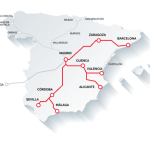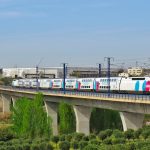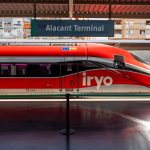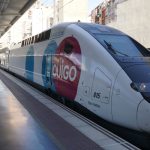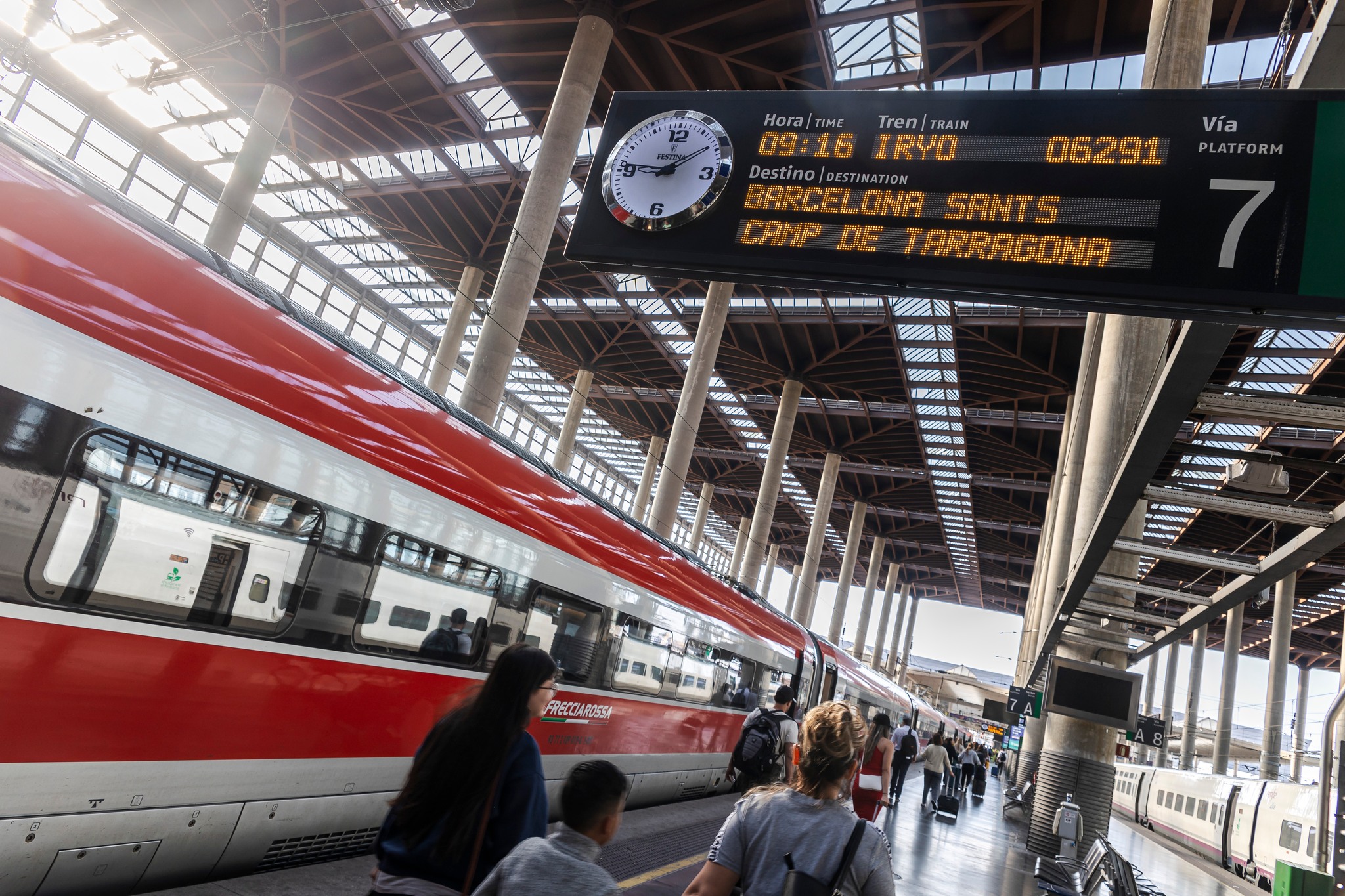 Adif and Adif Alta Velocidad started the second phase of Spanish rail liberalisation process by launching a survey which will highlight the opinion of potential candidates to deliver passenger services on country’s rail network and other interested parties in participating in the process. The process will contribute to designing a new phase of market opening to competition.
Adif and Adif Alta Velocidad started the second phase of Spanish rail liberalisation process by launching a survey which will highlight the opinion of potential candidates to deliver passenger services on country’s rail network and other interested parties in participating in the process. The process will contribute to designing a new phase of market opening to competition.
The questionnaire will collect information on interest in new routes, rolling stock, framework agreements and duration and cooperation between companies, maintenance and commercial services, among other issues. It will also highlight the interest in frequencies, stops, estimated occupancy of services and turnaround time at the terminals. It also asks specifically about the use of the Atocha-Chamartín tunnel with standard gauge rail or the Madrid bypasses, for cross rail services. Through the questionnaire, interested parties will also share the information about the characteristics of the rolling stock and the type of trains (in single or double composition), the number of seats, as well as the maximum speed.
The survey also includes questions about the framework agreement model, including the possibility of extending the current ones to other destinations, and its duration, taking into account the initial investment terms. The questionnaire will introduce the opportunity of cooperation between companies and the use of the code-share system, as in the aviation sector, the priority criteria – in addition to the maximum use of the infrastructure – when it is not possible to coordinate different requests. Maintenance operations, including the possibility of establishing Adif’s own workshops and the needs of a commercial services in the stations, even sharing services with other operators or providing themselves are other issues to establish a comprehensive model of liberalisation.
The period to fill up the survey is open until September 15, 2023. The processing of the information provided by the companies in the survey, and in subsequent interviews, deemed by the operators, will be managed with guarantees of confidentiality, Adif says.
After the consolidation of the launch of a single release model, called the ‘Spanish case’, recognised in Europe, Adif wants to continue taking advantage of the capacity of its network, boosting competition, and providing the opportunity to introduce more companies and more railway lines into the rail system, with a new supply of capacity.
The first phase of Spanish rail liberalisation opened the market to three operators, which compete with four brands, in the three main high-speed corridors. Some lines that already exceed pre-pandemic traffic levels have increased the modal share compared to other modes of transport and offer more citizens more and more competitive services.
The Spanish high-speed network, with a total length of 4,000 km, is the widest in Europe and the second in the world after China. The liberalisation of railway services has meant a greater use of a technologically advanced infrastructure, putting value on the investments made in Spain.
The first phase of the process of liberalising rail passenger transport in Spain was based on various analyses, both on the interest identified by railway companies in operating country’s rail network, and on the impact of competing rail traffic identified in other European countries. Adif and Adif AV undertook a proactive model, offering capacity to the market and, for the first time in Europe, it has achieved the competition of three operators on the same high-speed corridor.
The second phase of liberalisation in Spain will boost competition allowing more operators to enter the market and deliver better services, while rail operators become more responsive to customer needs, improve the quality of their services and their cost-effectiveness.
The Spanish rail liberalisation is based on the Fourth Railway Package approved by the European Parliament in December 2016 to reform the system which leads to the improvement of efficiency and competitiveness of the railway transport across Europe, while removing the institutional, legal and technical obstacles.
The opening of rail passenger market in Spain started with three selected corridors including Madrid – Barcelona – French Border and Valencia – Barcelona (Corridor 1), Madrid – Levante (Corridor 2 on Valencia and Alicante connection) and Madrid – Toledo – Seville – Malaga (Corridor 3). The framework agreements cover three packages (A, B and C) with different levels of operating capacity for each of the corridors depending on the number of tracks or trains per day and have a duration of ten years.
In November 2019, Adif awarded the packages to Rielsfera (Ouigo, a low-cost subsidiary of SCNF), Ilsa comsortium (a partnership created by Air Nostrum [55%] and Treintalia [45%]) and Renfe Viajeros (Renfe Passengers).
Package A was exclusively for Renfe Viajeros which under the agreement starts with 96 high-speed trains and will occupy an average of 86% of the capacity offered for this package in all three corridors until 2030, increasing its current offer by 20%.
Under package B, Ilsa, operating under the brand Iryo, will run 23 Frecciarossa 1000 trains occupying occupy an average of 70% of the capacity offered for this package in all three corridors. In November 2022, when Iryo started its first services on Madrid – Barcelona corridor, it has become the first high-speed rail transport operator in Spain. In March 2023, Iryo announced the launch of commercial trips between Madrid and Seville with a stop in Córdoba and in Antequera, “breaking the monopoly for the first time in Andalusia.” The inaugural trip has been made between the Madrid-Atocha station and the Seville-Santa Justa station, via Córdoba station. Iryo estimates that in the coming years, it will transport 2.5 million passengers per year in Andalusia, generating tourist spending of EUR 350 million annually. At the national level, the figure will rise to 8 million passengers per year with tourist spending of EUR 2 billion per year. In 2020, Trenitalia signed a EUR 797 million contract with Hitachi Rail and Bombardier Transportation (now Alstom) for the acquisition of 23 Frecciarossa 1000 high-speed trains for services on the three Spanish rail corridors. The trains will have a capacity of 460 passengers and will be able to run at speeds of up to 260 km/h.
The agreement with Ouigo España, an SNCF subsidiary, for the package C included the provision of transport services with trains providing a capacity for more than 500 passengers. The company will operate 14 Euroduplex high-speed trains approved in Spain, with up to 30 daily departures across Spain, occupying 100% of the capacity offered for this package in all the three corridors. In May 2021, Ouigo España launched the transport services on Madrid – Barcelona corridor connecting the two cities in 2h30. Starting October 2022, a journey of 1h50 links Madrid and Valencia and in April 2023, the operator launched two pairs of daily trains connecting Madrid Chamartín and Alicante. The rail company now offers 5 daily return journeys between Madrid and the Valencian community, with 2 for Alicante and 3 for Valencia. The trains connecting Madrid, Barcelona and Valencia run at a speed of 300 km/h.
Ouigo España is the first high-speed train business of SNCF outside France delivering affordable high-speed transport services on the Spanish side of the Pyrenees connecting Barcelona, Madrid, Valencia, Zaragoza, Tarragona, Alicante and Albacete. The company estimates that in the future, it will offer 25,000 to 30,000 seats a day, with travel times of less than 2h45 to new destinations in Southern Spain such as Córdoba, Seville and Malaga.
In the two years since the launch of its first low-cost high-speed rail services, Ouigo España carried more than 5 million passengers. According to SNCF report published in May 2023, Ouigo España carried 509 passengers in each single trainset and up to 1,018 in each duplex, which is the equivalent of 24,600 flights and over 2 million journeys by car.
In the process of liberalisation, Adif and Adif AV have made a global proposal for a 60% higher capacity than the one in use with 189 trains per direction per day, compared to 119 in the benchmark set for 2029. The opening of the market would result in a 65% increase of capacity offered with a 50% increase on the Madrid – Barcelona connection, 40% on the Madrid – Levante and 60% on the Madrid – Sur route.
Share on:



